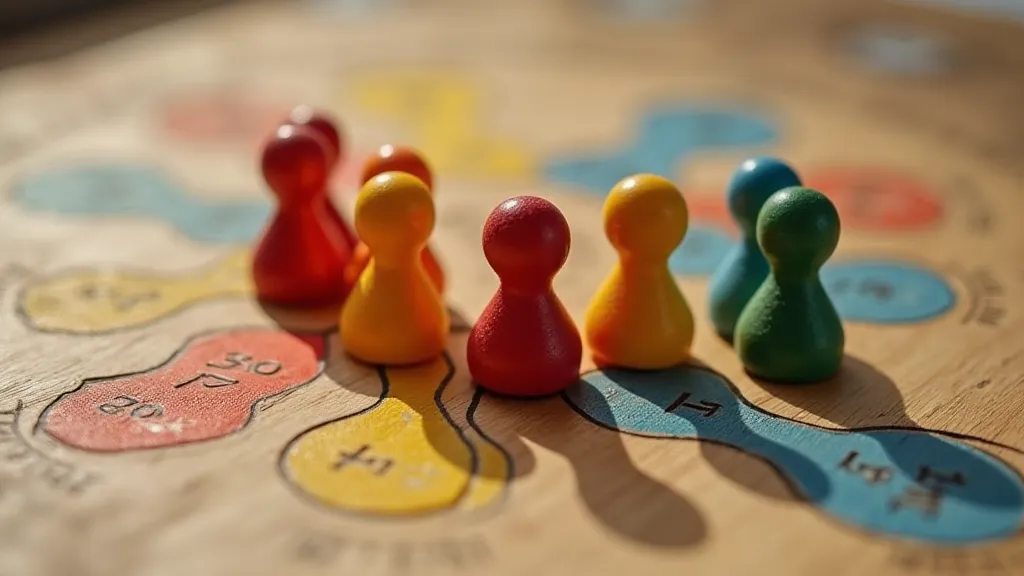Understanding Worker Placement: Agricola and Beyond
Worker placement is a beloved mechanic in modern board games, offering a unique blend of planning, resource management, and player interaction. While it can seem daunting to newcomers, understanding the core principles will significantly enhance your enjoyment and strategic depth. Let's dive into the fundamentals, with a particular focus on the seminal game Agricola, and explore how these mechanics manifest in other titles.
The Core Concept
At its heart, worker placement is about assigning limited “workers” (often meeples, but they can be anything) to specific locations on a game board to perform actions. These actions can range from gathering resources and constructing buildings to cultivating fields and breeding animals. The critical limitation – and the source of much of the tension – is that once a space is occupied, it’s generally unavailable to other players until the round ends (or the game’s specific rules allow for multiple workers).

Agricola: The Cornerstone
Agricola, designed by Uwe Rosenberg, is arguably the game that brought worker placement to the mainstream. In Agricola, players take on the role of farmers, striving to build the most efficient and prosperous farm over fourteen rounds. Each round, players take turns placing their limited workers onto action spaces. These actions allow them to gather wood, clay, and reeds; construct fences; plant crops; and raise livestock.
The brilliance of Agricola lies in its interconnected systems. Securing a crucial action space might deny your opponent a vital resource, but simultaneously block you from a different, equally important action in a later turn. This forces players to prioritize, anticipate their opponents' moves, and adapt their strategies on the fly. The scoring system, heavily weighted towards end-game farm development, adds another layer of complexity. Many players seeking similar cooperative challenges might find Spirit Island an excellent next step, which emphasizes strategic planning and adapting to evolving circumstances.
Beyond Agricola: Variations and Innovations
While Agricola established the framework, many games have innovated on the worker placement formula:
- Recurring Workers: Some games, like Lords of Waterdeep, allow players to retrieve their workers at the end of each round, allowing for more flexibility but also increasing the importance of claiming strategic locations first.
- Worker Abilities: Viticulture Essential Edition gives each worker unique abilities, forcing players to consider both location and worker synergy.
- Simultaneous Placement: Games like Everdell utilize simultaneous worker placement, creating a dynamic and unpredictable experience.
- Worker Upgrades: Raiders of the North Sea allows players to upgrade their workers, granting them additional abilities or efficiency.
The beauty of worker placement is its adaptability. Some games lean heavily into the competitive aspect, fostering tense moments as players vie for limited resources. Others prioritize cooperative gameplay, requiring players to coordinate their actions to achieve a common goal. If you enjoy a complex strategic challenge, you might find yourself wanting to explore games that require careful negotiation and alliance building, much like the classic game of Diplomacy, where skillful bargaining is just as important as resource management.

Expanding Your Family Game Collection
Worker placement often thrives in family games, providing a satisfying blend of strategic depth and accessibility. Many families find the challenge of coordinating actions and sharing limited resources to be both engaging and rewarding. This core principle of strategic allocation, so prevalent in worker placement, translates wonderfully into experiences where everyone participates and contributes towards a shared goal. If you’re looking for ways to bring your family together for engaging and memorable game nights, exploring games that incorporate worker placement mechanics is an excellent starting point. The joy of seeing everyone collaborate, strategize, and celebrate shared victories creates lasting bonds and cherished memories.
Tips for Mastering Worker Placement
- Prioritize Early: Competition for action spaces can be fierce. Identify your critical actions early and secure them if possible.
- Anticipate Your Opponents: Try to predict what actions your opponents will need and try to deny them those opportunities.
- Consider the Timing: Think about when you need to take specific actions. Sometimes, waiting a round can be more advantageous.
- Adaptability is Key: Be prepared to adjust your plans as the game unfolds and your opponents take actions.
Beyond understanding the basic principles, experienced worker placement players often develop a keen eye for identifying patterns and predicting opponent behavior. This ability to anticipate future actions is crucial for securing valuable resources and denying them to rivals. It's a skill that, like any other, is honed through experience. Many games offer diverse challenges; sometimes, it's about maximizing individual score, other times, it’s about ensuring the entire team thrives, as is often the case in family board games that require teamwork and shared objectives.
Advanced Strategies: Layering and Blocking
Once you're comfortable with the fundamentals, you can start to explore more advanced strategies. One crucial technique is "layering," which involves anticipating future needs and securing actions that will be beneficial in later rounds. This requires a long-term perspective and a thorough understanding of the game's economy. Another key strategy is "blocking," which involves intentionally taking actions that aren't immediately useful but deny your opponents access to vital resources or opportunities. Effective blocking requires careful consideration of your opponents' strategies and a willingness to sacrifice short-term gains for long-term advantage. It's a dance of calculated risks and opportunities, constantly assessing the board state and adapting your plans accordingly.
The Future of Worker Placement – Hybrid Mechanics
Worker placement isn’s just a mechanic; it’s a foundation for complex and engaging gameplay. The continued growth in popularity of games like Agricola demonstrates this principle. As game designers continue to explore innovative approaches, we're seeing a rise in hybrid mechanics that cleverly combine worker placement with other beloved elements. Deck-building games, for example, frequently incorporate worker placement to manage resources and unlock new abilities. Similarly, area control games benefit from worker placement’s strategic depth, allowing players to secure territories and exert influence over the game board. These hybrid approaches not only enrich the worker placement experience but also introduce new layers of complexity and strategic possibilities for players of all levels.
The Future of Worker Placement
Worker placement remains a vibrant and evolving mechanic in the board game landscape. Designers continue to find new and exciting ways to incorporate it into their games, pushing the boundaries of strategic depth and player interaction. We'll likely see even more innovative approaches to worker placement in the coming years, including hybrid mechanics that blend worker placement with other popular game elements like deck-building and area control. Perhaps we'll see games that allow for dynamic worker abilities that change throughout the game or even workers that can be influenced or manipulated by other players. The possibilities are truly endless. The continued evolution of worker placement demonstrates its enduring appeal and its potential to deliver engaging and challenging gameplay experiences.

Ultimately, the best way to master worker placement is to play a variety of games that utilize the mechanic. Experiment with different strategies, observe experienced players, and learn from your mistakes. With practice and dedication, you're sure to become a skilled worker placement player and appreciate the depth and complexity that this beloved mechanic has to offer.





